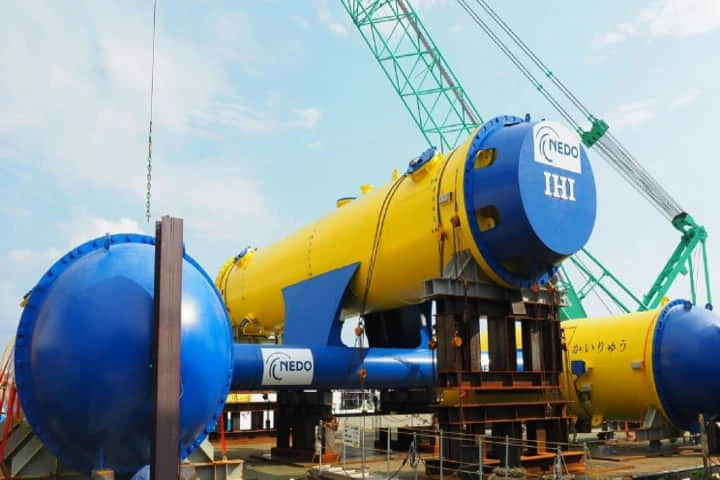Growing concern about pollution and dependence on fossil fuel is egging nations world over to look for alternate renewable energy sources. In this sphere, Japan is looking deep beneath the waves at a source which as per a report in sciencealert.com could be a winner.
To harness this wave energy, engineers and technicians in Japan have built a huge machine while resisting the strongest of ocean currents will in turn use it to create electricity.
IHI Corporation or Ishikawajima-Harima Heavy Industries in collaboration with New Energy and Industrial Technology Development Organization has put their designs to test in 2017.
This year in February, a major landmark was created when three-and-a-half years of field tests in the southwestern Japanese coast was completed.
The protype of the machine which has been named as Kairyu – meaning ocean current – weighs 330 tons and has a fuselage which is 20 metres with a pair of cylinders of same size on its flanks housing power generation system connected to a turbine blade 11 metre long.

The Kairyu diagram
Once Kairyu is secured to the ocean bed with an anchor line and power cables, it will position itself on its own to get the maximum benefit of the deep-water current and generate power to channelise it in the grid.
The island country depends predominantly on fossil fuels to meet its power needs and these are imported. With the 2011 disaster involving Fukushima nuclear station, public sentiments have turned against this source of power.
The physical and natural features of the country don’t support a great number of solar panels or wind turbines to harness renewable energy. Thus, they look at extensive stretches of coastal water, especially the North Pacific gyre which on meeting Japan provides Kuroshio current with very strong flow.
According to IHI, harnessing the current energy will provide 205 gigawatts of electricity – what is currently generated in Japan.
While the figure may seem impressive, one needs to reckon how difficult it is to harness power from currents whose movements are turbulent. The flow of water at the surface is the fastest and that is where the typhoons can damage the power stations.
To checkmate this, Kairyu has been designed to hover roughly 50 meters below the waves. While it moves to the water surface, the drag will produce the required torque on the turbines. To keep the machine stable, each of its blades rotates in an opposing direction.
When the current flow is between two and four knots, a total of 100 kilowatts of power is produced. Once it is established that it can withstand the vagaries of nature, the device could soon have a bigger version of it with turbines which are 20-metre-long and produce more than 2 megawatts.
The next decade, if all works out well, will witness many such power generators feeding electricity into the grid, provided the scale up of Kairyu is successful.
Renewable energy using currents, tides and waves of the oceans have to contend with limitations of the environment and high cost of engineering to become a success. Overcoming obstacles like these, will enable IHI to generate between 40 and 70 per cent of Japan’s energy needs from ocean currents.
Also read: Japan now uses drones that destroy killer wasps and nests




















